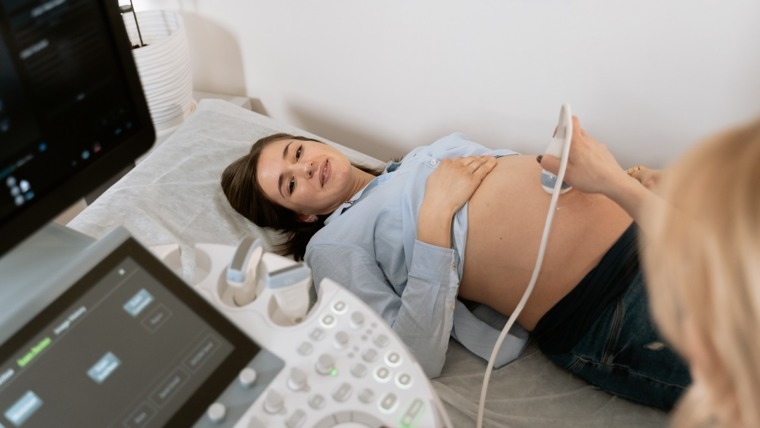
Are You Struggling With It?
What is Secondary Infertility
Written by Dr Raewyn Teirney
Secondary Infertility is the medical term for the condition where couples struggle to conceive their second or even third time, even if they conceived relatively quickly and easily with their first child.
How Do I Know If I Have Secondary Infertility?
We consider that a couple is experiencing Secondary Infertility if they have been trying for 12 months or more without conceiving. In couples aged over 35, this time frame shrinks to six months.
Anyone of any age who is experiencing Secondary Infertility is advised to seek medical support to check for any physical fertility problems in either the male or female. From there, we can explore the myriad fertility and IVF options available.
How often does it occur in Australia?
It's estimated that around 15 to 20 per cent of Australian couples are affected by secondary fertility, based on anecdotal reports by fertility experts of couples who seek medical intervention. Statistically, if you are 35 and under, the chance of getting pregnant would be about 50 per cent. Once you’re 35 to 37, we are talking around 40 per cent, so you can see it is starting to decline quickly after 35. And then from 38 to 40 would be about 35 per cent. From 40 onwards, it drops considerably. A 44-year-old would only have a 5 per cent chance of getting pregnant with IVF as the eggs are often genetically abnormal by that stage.
Couples Are Not Always Aware They Are Struggling With it
Some couples have no idea about the condition, as they have already conceived the first pregnancy and experienced a healthy journey and a healthy, happy baby. Others who may have experienced fertility difficulties with their first child may be more prepared for it, but it certainly doesn’t make their journey any easier.
What are some of the causes of secondary infertility?
There are many contributing factors, but age is a significant one. Women have a finite egg reserve that begins to diminish rapidly after the age of 35, which is around about the age most couples are now having their second child (often even their first). This is unfortunately also when it becomes difficult for many women to fall pregnant naturally.
Contrary to popular belief, a man's sperm quality also declines with age. Younger men’s sperm has more chance of fertilising a younger egg.
Another cause may be that there is impaired sperm production or function in men, or for women, there could be damage to the fallopian tubes, ovulation disorders, endometriosis or PCOS (Polycystic Ovary Syndrome).
We also know that poor lifestyle choices, such as smoking and drinking too much alcohol, taking illicit drugs, not getting enough exercise and eating an unhealthy diet, come into play, as they all cause oxidative stress to the body. This is important for both men and women, as the health of a man’s sperm is affected by his general health and wellbeing, as is that of a woman’s egg.
Being outside of a healthy weight range is also a contributor. If either partner has a BMI under 19 or over 30, it can negatively impact their chances of conceiving (significantly more so if they are overweight). A normal BMI is between 19 to 25.
Stress is also a big consideration. People may have busy careers, are juggling that with the responsibilities of their first child, running a household and paying bills and so on. We always advise couples experiencing fertility issues to look into relaxation techniques such as meditation, yoga or Pilates or even hypnotherapy.
Quite often when people relax and follow the right health and lifestyle advice, they can conceive naturally. I would say in my clinic, probably about 40 per cent would go on and conceive naturally. About 30 per cent would go on and have IVF, while the remaining 30 per cent are likely to accept that they will be a one-child family and if it happens, it happens.
In cases where there are actual physical issues, such as fallopian tube damage, endometriosis or impaired sperm and the like, the myriad IVF treatments we have available become the go-to and we tailor treatment options to suit each couple, be it fertility surgery, Ovulation Induction, Artificial Fertilisation, Intracytoplasmic Sperm Injection (ICSI), or In Vitro Fertilisation.
We also believe that lack of exercise can contribute to Secondary Infertility. Regular exercise improves the health of all the organs of the body, which includes the reproductive organs.
Quality and quantity of sleep is of utmost importance, too. Often couples with a toddler will be run ragged and too tired to have sex, or even find the will to have sex. Tired couples are also far less likely to be diligent about fertility tracking, which is of utmost importance for all couples trying to conceive, no matter what age or stage they are at.
We advise adhering to strict bedtime routines for Baby Number One and trying not to let your toddler in the bedroom with you – save that space for your baby-making!
Dealing With The Condition
The emotional aspect of Secondary Infertility is really difficult. I have so many beautiful patients who become so emotionally drained and their self-esteem plummets. I have had patients crying to me, saying they feel like failures or that they are not worthy of being a mum again. This is absolutely not the case – they are worthy, and they are certainly not failures. Sometimes Mother Nature just needs a helping hand.
We advise couples who have had trouble conceiving naturally after trying for 12months if under 35, or six months if over 35, to see their GP for a referral to a fertility specialist. Then, we can run all the right tests to work out what is actually going on, and tailor a treatment program to suit their individual situation.
Firstly, monitor your basal body temperature using a digital high-speed thermometer. Women with a regular menstrual cycle will notice a small drop in temperature – about 0.2 degrees Celsius when they begin ovulating, which then rises again a day or two later. This is a perfect time to start babymaking.
Next, women can test for Luteinising Hormone (LH) using a simple urine test. Ovulation is triggered by the production and release of LH from the brain’s pituitary gland.
Women can also monitor their cervical secretions each time you go to the bathroom. Changes in cervical secretions can be an indicator as to when women are most fertile. When oestrogen levels are low, mucus secretion will be minimal. When they are at their most fertile, it will be clear in appearance, thin, slippery and stretchy.
Keep a lookout for other signs of fertility, too. These include one-sided lower pelvic pain (on either side of the pelvis), which is a sign of ovulation, a heightened libido, an amplified sense of smell and taste and in some women, enlarged, tender breasts, fluid retention, acne and bloating.
We also advise couples to take pre-conception vitamins. For men, they should be looking at antioxidant vitamins as well as selenium, zinc and garlic, as these support male fertility and sperm health. Women should be taking a 500mcg supplement of folic acid daily, at least a month prior to conception.



